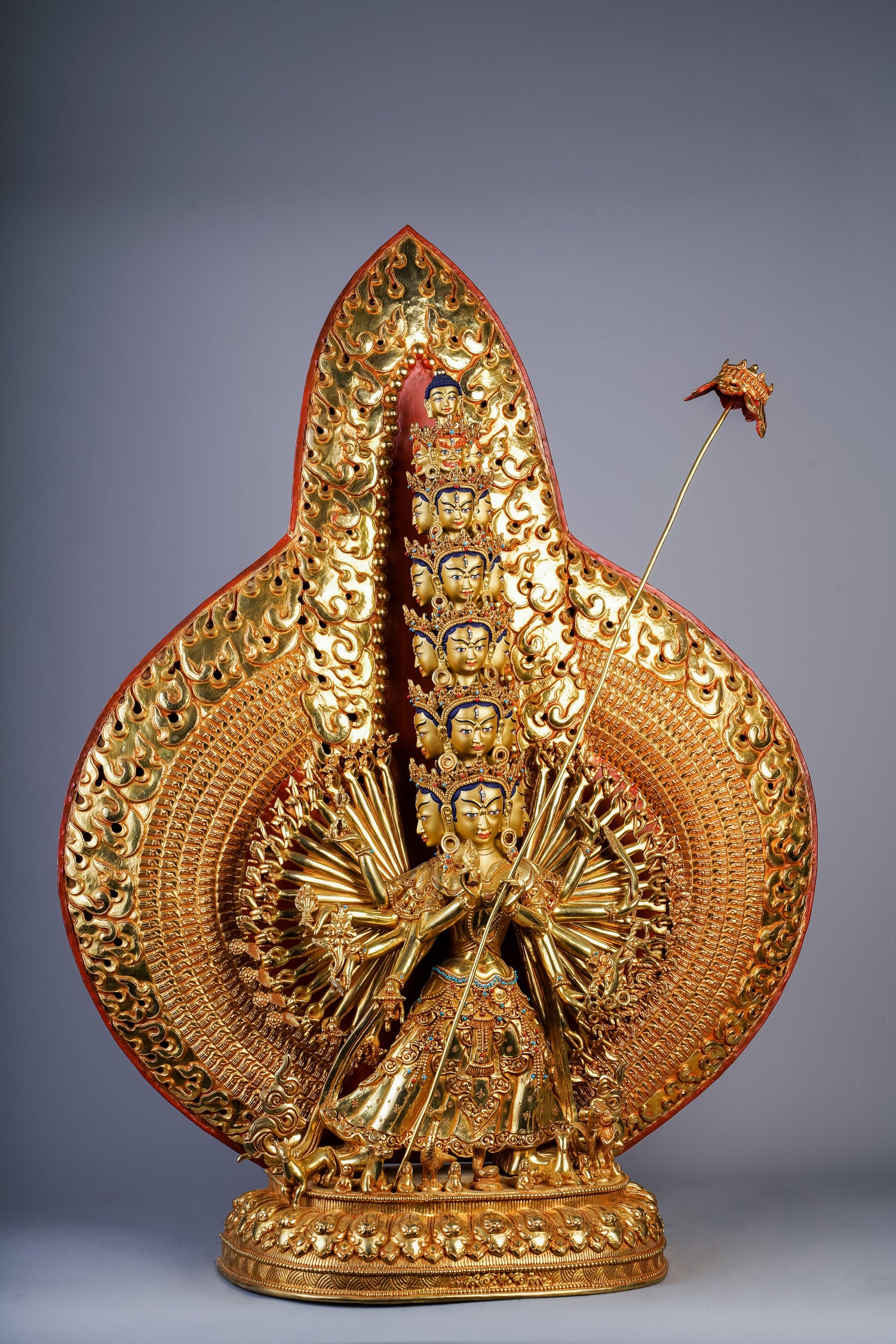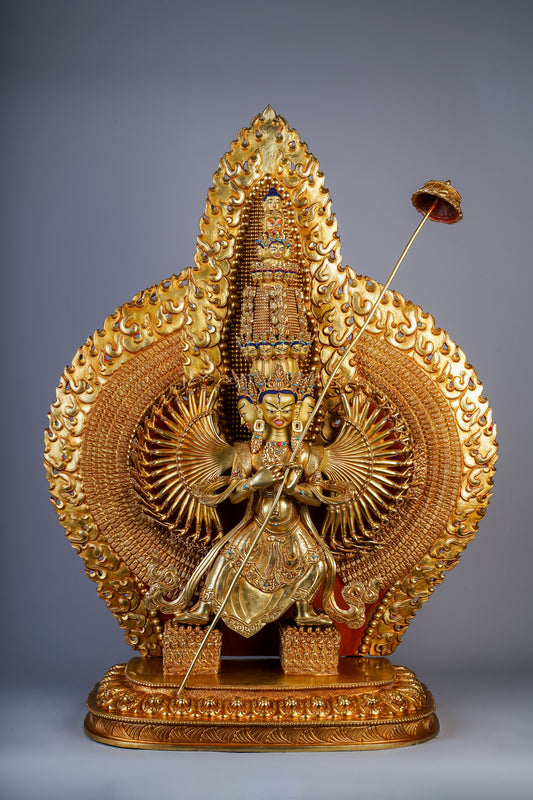Ushnisha Sitatapatra – The White Parasol Goddess of Protection

| | Sitatapatra
Sitatāpatrā, the fierce goddess of protection is said to have emanated from uṣṇīṣa, the crown, of Shakyamuni Buddha himself. Her name translates into The White Parasol, which is her iconic symbol and transcends the mundane function of an ordinary umbrella. The Parasol embodies a large, silken canopy that is not only visually striking but also serves as a powerful emblem of high status, nobility, and divine authority. This striking parasol signifies her role as a guardian figure, offering an unparalleled shield of safety and protection to her devotees against all forms of danger. Sitatāpatrā is celebrated in various traditions as an invincible protector, warding off a multitude of supernatural threats, including menacing spirits, the dark arts of black magic, and the adverse influences of astrological misalignments.
The origin of Sitātapatrā is intricately captured in her complete name, Uṣṇīṣasitātapatrā, which translates to “White Parasol Lady Who Emerged from the Buddha’s Crown of Light.” This extended name beautifully encapsulates her divine essence, while Sitātapatrā serves as the more commonly used abbreviation that evokes her protective qualities. Notably, her origin story does not delve into her relationship with the Buddha's sunshade, instead, it is her very name that conveys her representation of the protective energy associated with the white (sita) parasol (ātapatra). This narrative also traces the source of her power back to the Buddha’s infinite cosmic awareness and radiant brilliance, infusing her with a sense of celestial importance.
The Goddess Born from the Buddha’s Crown
According to the Buddhist origin narrative, Shakyamuni Buddha astonishingly manifested the goddess Sitātapatrā from the crown of his head, known as uṣṇīṣa, which literally means "crown protrusion." This divine event unfolded while he resided in the heavenly realm of Trāyastrimśa. In a profound meditative state called the "perfect vision of the diadem," the Buddha released sacred syllables of her dhāraṇī. These syllables danced into existence as luminous letters shimmering in radiant light.
As her melodious voice echoed, reverberating through the celestial realms, it greeted the Buddha along with a gathering of bodhisattvas, deities, and spirits. From the radiant light streaming from the Buddha’s mind, a breathtaking transformation occurred—this light crystallized into the dazzling white form of Sitātapatrā, complete with a protective sunshade casting a sacred aura around her.
The Buddha pronounced her vital role: to sever all malign forces, to diminish the spells cast by others, and to turn away all enemies and the haunting specters of danger and hatred. To dispel any illusions about her nature, he asserted that Sitātapatrā is not merely an ethereal being; she embodies fierce power and majesty. Clad in a garland of flames, she stands as a formidable protector, crushing the enemies and demons that threaten peace. Yet, in a striking paradox, she also manifests as an exquisite maiden, embodying grace and beauty that captivates all who behold her.
References
Shaw, M. E. (2006). Buddhist Goddesses of India. Princeton University Press.
The Invincible Sitātapatrā Born From The Uṣṇīṣa Of Tathagata (Samye Translations, Trans.). (2023). 84000: Translating the words of Budhha.
Statues of Ushnisha Sitatapatra: The White Parasol Goddess of Invincible Protection
-
27 inch/ 70 cm Sitatapatra | གདུགས་དཀར་མོ། | 白傘蓋佛頂
Regular price $3,680.00Regular price

